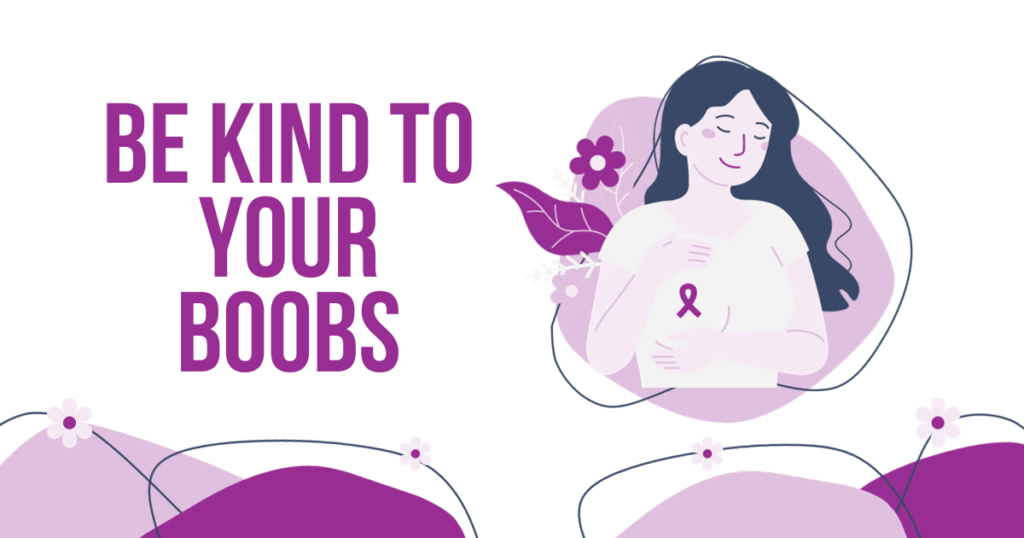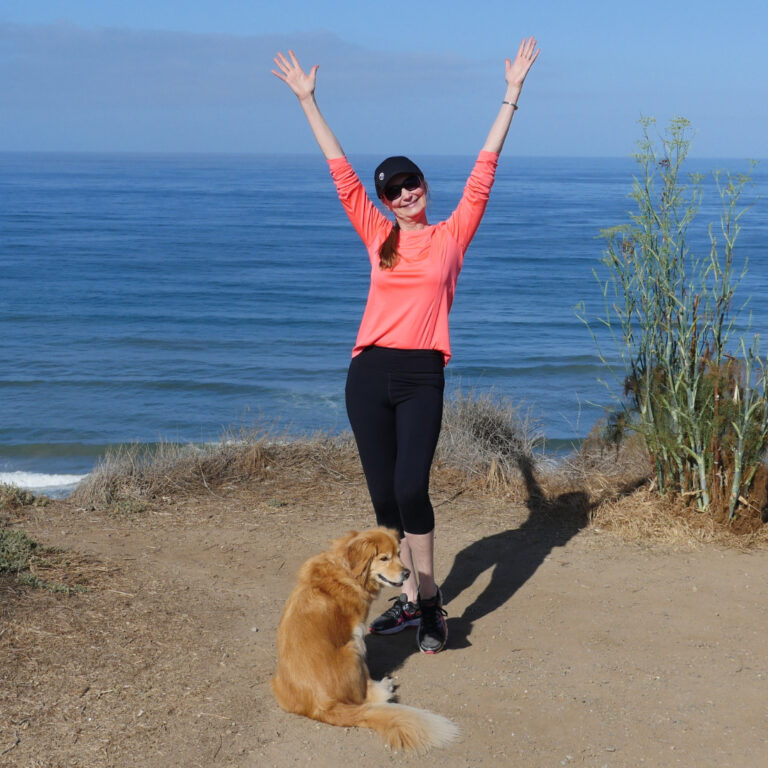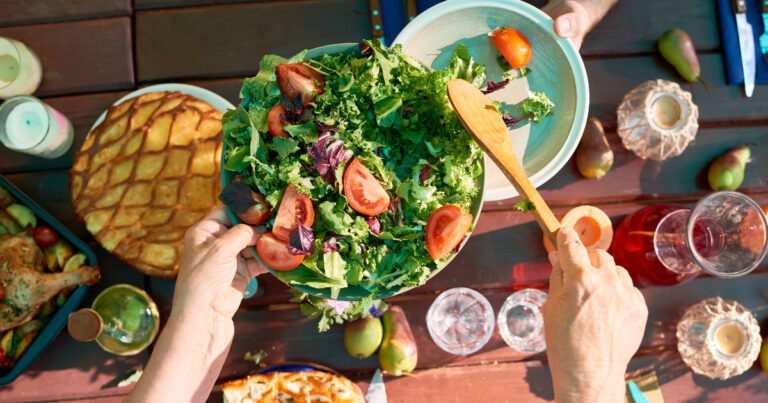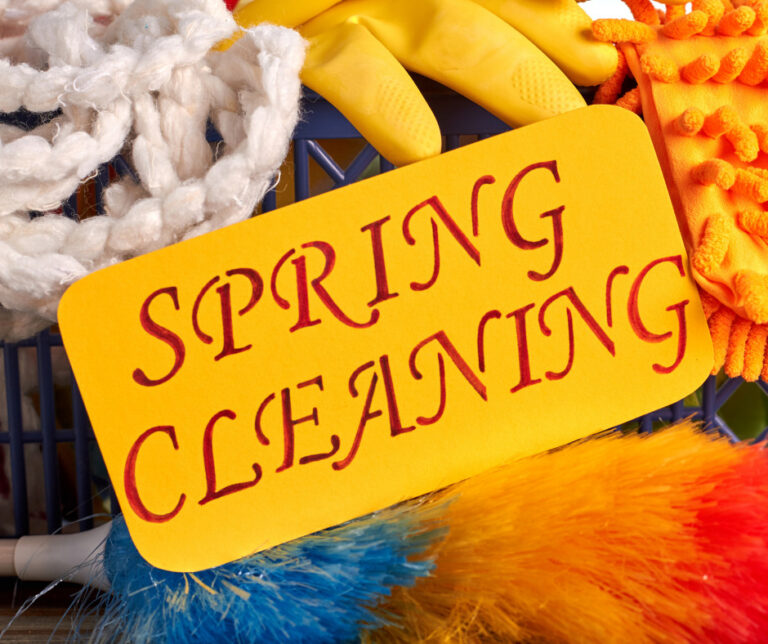Be Kind To Your Boobs (before it’s too late)

Stop right now and tell me, do you hate your boobs? Maybe they’ve dropped a bit or maybe they are too big or too small or you remember feeling terrible that your friends were getting them any you weren’t or the opposite. As women, our breasts are a part of our identity and it’s time to be kind to them before it’s too late.
In this blog post, I’ll share my journey with Invasive Ductal Carcinoma (Breast Cancer)
My Story (very short)
I was diagnosed with breast cancer in Dec of 2022 and had a mastectomy on my right breast in Feb of 2023 followed by 2 reconstruction surgeries. The final one in September of 2023. At the time I really liked my breasts, they were starting to droop a bit but they were not too big and not too small. AND I was lucky they were both about the same size. I took a picture of them before my surgery (it’s important to know how to hide pictures on your phone!)
Having one cut off was THE hardest thing I’ve ever had to do. I felt fine, they looked fine, doing this was going to make me feel worse not better but I had cancer. So, I sucked it up (didn’t cry much at all) and after 2 reconstructive surgeries, I am right now “cancer free”.
Along with helping women get moving, feel better and keep their bodies strong ENOUGH to deal with whatever curve ball life throws at them I also want to share some of the things I’ve been learning about breast health, what breast cancer is, signs and symptoms, what they know about causes and risk factors and what you can do to keep your breasts healthy and prevent breast cancer.
First, What Is Breast Cancer?
A breast is made up of three main parts: lobules, ducts, and connective tissue. The lobules are the glands that produce milk. The ducts are tubes that carry milk to the nipple. The connective tissue (which consists of fibrous and fatty tissue) surrounds and holds everything together.
Breast cancer is a disease in which cells in the breast grow out of control. There are different kinds of breast cancer. The kind of breast cancer depends on which cells in the breast turn into cancer.
Most breast cancers begin in the ducts or lobules. Breast cancer can spread outside the breast through blood vessels and lymph vessels. When breast cancer spreads to other parts of the body, it is said to have metastasized.
Mine was invasive ductal carcinoma (the most common kind). I had 2 small lumps in my right breast that were far enough apart that a mastectomy was recommended. I was going to do a lumpectomy followed by radiation until they found the second lump with an MRI. I could not feel either of these because they were so small.
Results from the biopsy showed that my cancer was ER (Estrogen Receptor) and PR (Progesterone Receptor) positive, HER 2 negative (again the most common kind). If a cancer cell is ER+, it means it can receive signals from estrogen instructing the cells to grow. If a cancer cell is PR+, these signals can come from the progesterone hormone. I had to go off my HRT immediately.
HER2 stands for human epidermal growth factor receptor 2. The HER2 protein was discovered in the 1980s. HER2 proteins are found on the surface of breast cells. They’re involved in normal cell growth but can become overexpressed. This means that a person’s levels of the protein are higher than usual. Mine was negative so it meant that breast cancer cells did not have abnormal levels of HER2 proteins
They took one of my lymph nodes and it did not have any cancer. If it had, they were pretty sure it had spread outside of my breast. I won’t get into all these details because it’s very complicated but if you’d like to know more let me know…I’ve done so much research.
Bottom Line is there is A LOT of testing to be done, results to digest and treatment decisions to make based on the results.
Signs and symptoms of breast cancer may include:
- A breast lump or thickening that feels different from the surrounding tissue
- Change in the size, shape or appearance of a breast
- A newly inverted nipple
- Peeling, scaling, crusting or flaking of the pigmented area of skin surrounding the nipple (areola) or breast skin
- Redness or pitting of the skin over your breast, like the skin of an orange
When to see a doctor
Get your yearly mammogram and if you receive that letter that says you have dense breast tissue, ask for an ultrasound.
If you find a lump or other change in your breast — even if a recent mammogram was normal — make an appointment with your doctor for prompt evaluation.
What Causes Breast Cancer
Doctors know that breast cancer occurs when some breast cells begin to grow abnormally. These cells divide more rapidly than healthy cells do and continue to accumulate, forming a lump or mass. Cells may spread (metastasize) through your breast to your lymph nodes or to other parts of your body.
Breast cancer most often begins with cells in the milk-producing ducts (invasive ductal carcinoma). But it may also begin in the glandular tissue called lobules (invasive lobular carcinoma) or in other cells or tissue within the breast.
Researchers have identified hormonal, lifestyle and environmental factors that may increase your risk of breast cancer. But it’s not clear why some people, who have no risk factors, develop cancer, yet other people with risk factors never do. It’s likely that breast cancer is caused by a complex interaction of your genetic makeup and your environment. In other words they have NO IDEA what causes breast cancer and if someone says they do – don’t buy what they’re trying to sell you.
Are You At Risk?
A breast cancer risk factor is anything that makes it more likely you’ll get breast cancer. But having one or even several breast cancer risk factors doesn’t necessarily mean you’ll develop breast cancer. Many women who develop breast cancer have no known risk factors other than simply being women.
Factors that are associated with an increased risk of breast cancer include:
- Being female. Women are much more likely than men are to develop breast cancer.
- Increasing age. Your risk of breast cancer increases as you age.
- A personal history of any breast conditions. If you’ve had breast cancer in one breast, you have an increased risk of developing cancer in the other breast. What I’m most worried about.
- A family history of breast cancer. If your mother, sister or daughter was diagnosed with breast cancer, particularly at a young age, your risk of breast cancer is increased. Still, the majority of people diagnosed with breast cancer have no family history of the disease.
- Inherited genes that increase cancer risk. The BRCA1 and BRCA2 are associated with an increased risk of breast cancer and other cancers, but they don’t make cancer inevitable.
- Environmental risk factors were difficult to get a lot of information on because they don’t know. If you received radiation treatments to your chest as a child or young adult, your risk of breast cancer is increased. But other things like pesticides, lead, cadmium, you name it – there is nothing concrete that I could find that we could do anything about.
- Obesity. Being obese increases your risk of breast cancer.
- Beginning your period at a younger age. Beginning your period before age 12 increases your risk of breast cancer.
- Beginning menopause at an older age. If you began menopause at an older age, you’re more likely to develop breast cancer.
- Having your first child at an older age. Women who give birth to their first child after age 30 may have an increased risk of breast cancer.
- Having never been pregnant. Women who have never been pregnant have a greater risk of breast cancer than do women who have had one or more pregnancies.
- Postmenopausal hormone therapy. This one is so controversial and to be honest they don’t know. I was on HRT and have found so much contradicting research it makes my head spin. Some say it causes breast cancer others say NO, it helps with breast cancer. All I know is that I miss my cream, it made me feel human again and we need more research. I’ve even volunteered to be in any testing that might help.
- Drinking alcohol increases the risk of breast cancer. I did not know how much of a risk this was so I’ve cut way back
Things you can do to help reduce your risk of breast cancer:
Ask your doctor about breast cancer screening. Discuss with your doctor when to begin breast cancer screening exams and tests, such as clinical breast exams and mammograms. This is how they found mine and they caught it very early thank goodness. If you have dense breasts – talk to your doctor about the best breast cancer screening strategies that are right for you.
- Become familiar with your breasts through breast self-exam for breast awareness. If there is a new change, lumps or other unusual signs in your breasts, talk to your doctor promptly.
- Drink alcohol in moderation, if at all. Limit the amount of alcohol you drink to no more than one drink a day
- Exercise most days of the week. Aim for at least 30 minutes of exercise on most days of the week. If you haven’t been active lately, ask your doctor whether it’s OK and start slowly.
- Do your research on postmenopausal hormone therapy. This is fraught with controversy and they still don’t know so I’m not going to talk much about this.
- Maintain a healthy weight. This is easier said than done I get it, but it’s worth digging into what might work for you because obesity is linked to not only breast cancer but other diseases
- Make healthy food choices. Eating a balanced diet rich in fruits, vegetables, whole grains, and lean proteins can significantly impact breast health. Antioxidants in fruits and vegetables help protect breast cells from damage, while fiber aids in maintaining hormone balance. Incorporate foods high in omega-3 fatty acids, like salmon and flaxseeds, as they may reduce the risk of breast cancer. I’ve also been learning of the many health benefits of mushrooms!
- Avoid Smoking Smoking is linked to an increased risk of breast cancer and other health issues. If you smoke, seek support to quit smoking and reduce your risk.
- Wear a Supportive Bra. Wearing a well-fitted, supportive bra can help prevent breast discomfort and reduce the strain on breast tissues. Avoid wearing overly tight or ill-fitting bras, as they can impact breast health negatively.
- Manage Stress: Chronic stress can affect hormone levels in the body, potentially impacting breast health. I talked to Dr Christine Horner who has a whole program on breast cancer and she told me of a study of 858 women in Poland that looked at whether the cumulative effect of stress over time (death of a loved one, divorce, retirement, etc.) had a relationship with breast cancer rates. There was a strong correlation that young women who had endured traumatic life events had an increased breast cancer risk. Now this is not something you can control but doing what you can to reduce your stress is something could be very helpful not just for your breasts but your overall health. I’m trying meditation, it’s not easy but I think it’s working.
THAT WAS ALOT 🤪
Here’s what I want you to do:
- Make sure you get your yearly Mammograms, ask for more if you have dense breast
- Today, do one thing that makes you happy (do this everyday)
- Choose one healthier food option than you would have yesterday.
This is a scary disease, but if caught early it is very treatable. You could drive yourself crazy, eating only organic, anti-cancer this or that and still get it. I was VERY healthy, had no genetic markers and still got it.
“Cancer might rob you of the blissful belief that tomorrow stretches into forever. In exchange, you are granted the vision to see each day as precious, a gift to be use wisely and richly. No on can take that away.” – National Cancer Institute
I hope you learned something and please reach out if, god forbid, you’ve been diagnosed. I know that God gave me this for a reason and I am meant to help others with the knowledge I’ve gathered. Just use this link to find a time that works for both of us (it’s FREE) BOOK NOW






